15 years one-stop China custom CNC machining parts factory
 5 |
Published by VMT at Nov 13 2025 | Reading Time:About 7 minutes
5 |
Published by VMT at Nov 13 2025 | Reading Time:About 7 minutes
Choosing between CNC machining and sheet metal machining can be confusing—both offer precision, versatility, and wide material options. But using the wrong process could lead to higher costs, longer lead times, or poor part performance. Many designers face this issue when developing prototypes or scaling production.
The good news is, by understanding each process’s strengths and limitations, you can easily decide which one fits your metal part’s needs. Whether you’re manufacturing aluminum enclosures, stainless steel housings, or custom copper components, the right choice will save time and cost while ensuring top-quality results.
CNC machining is ideal for producing precise, complex 3D parts, while sheet metal machining works best for thin, flat components like enclosures or brackets. Choose CNC machining for strength and tight tolerances, and sheet metal fabrication for lightweight, cost-efficient production. Both processes support materials like aluminum, stainless steel, copper, and brass.
Now that you understand the basic difference between CNC machining and sheet metal fabrication, it’s time to explore how each process works and where it performs best. By comparing their steps, advantages, and applications, you’ll learn how to match your part’s design, materials, and production goals to the right manufacturing process.
CNC machining is a subtractive manufacturing process that uses computer-controlled tools to precisely remove material from a solid block, creating complex and accurate parts. You can produce detailed shapes with tight tolerances, making it ideal for components like aerospace brackets, automotive fittings, or electronic housings.
The CNC machining process typically involves programming the cutting path through CAD/CAM software, then using tools such as mills, lathes, or drills to shape materials like aluminum, stainless steel, brass, or copper.
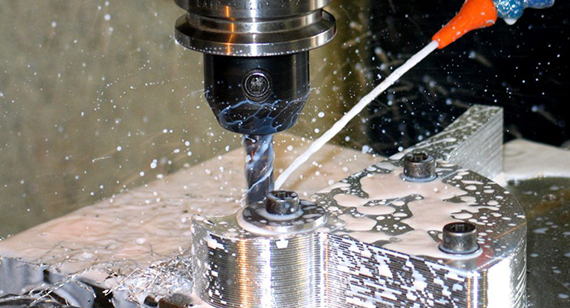
The Most Common CNC Machining Operations
CNC machining includes several key operations, but the most common are CNC milling and CNC turning. Each plays a different role in shaping your metal parts.
CNC milling uses rotating cutting tools to remove material from a stationary workpiece. It’s perfect for creating flat surfaces, slots, holes, and 3D contours. Milling is widely used for making aluminum housings, stainless steel covers, and precision components that require detailed features.
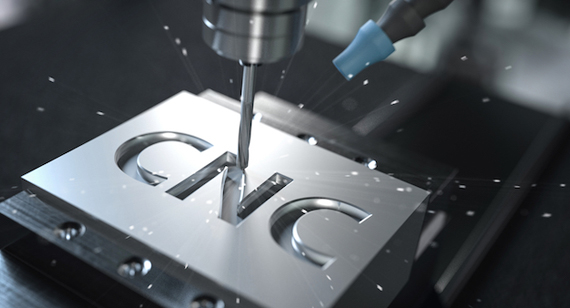
CNC turning rotates the workpiece while a stationary cutting tool removes material. This method produces cylindrical parts such as shafts, bushings, and threaded connectors. It’s ideal for applications in automotive, aerospace, and industrial machinery.
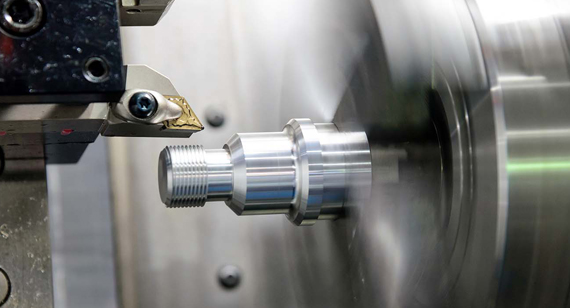
CNC machining delivers unmatched precision, speed, and versatility for producing metal parts. Whether you’re making aerospace components, automotive parts, or industrial enclosures, it ensures consistent quality and reliability. Understanding its main advantages helps you make better production decisions.
Precision and Accuracy
High Precision
CNC machines can achieve extremely tight tolerances—often within ±0.01 mm—making them perfect for parts requiring exact fits, such as electronic housings or aerospace fasteners.
Tight Tolerances
CNC machining maintains consistent accuracy across production runs. Even when producing hundreds of components, the last piece matches the first.
Repeatability
Because CNC machines operate based on digital programs, they can reproduce the same design repeatedly with zero human error.
Efficiency and Speed
Faster Production Speed
Once programmed, CNC machines can quickly produce parts without interruption. Complex designs are processed faster than manual methods, helping you meet tight deadlines.
24/7 Operation
CNC machines can run continuously with minimal supervision. This maximizes productivity and shortens delivery cycles.
Automation
The process is highly automated, reducing manual handling and ensuring consistent quality. Automation also minimizes tool wear and errors caused by fatigue.
Cost and Labor
Reduced Labor Costs
CNC machining requires fewer operators compared to manual machining. Once set up, machines can handle multiple tasks automatically.
Lower Long-Term Costs
Although initial setup costs are higher, CNC machining saves money over time through lower scrap rates, fewer reworks, and stable production efficiency.
Versatility and Complexity
Complex Designs
CNC machining easily handles 3D shapes, intricate curves, and fine details that are impossible with traditional tools.
Multiple Materials
You can machine aluminum, stainless steel, copper, brass, and even plastics. This flexibility makes CNC machining suitable for various industries.
Flexibility
CNC machines can switch from one part to another quickly, making them ideal for both prototyping and production.
Rugged and Durable Parts
CNC machining removes material from solid blocks, resulting in dense and strong components. Such parts perform well in demanding environments like aerospace and heavy machinery.
CNC machined parts can be polished, anodized, plated, or powder-coated to improve corrosion resistance and appearance.
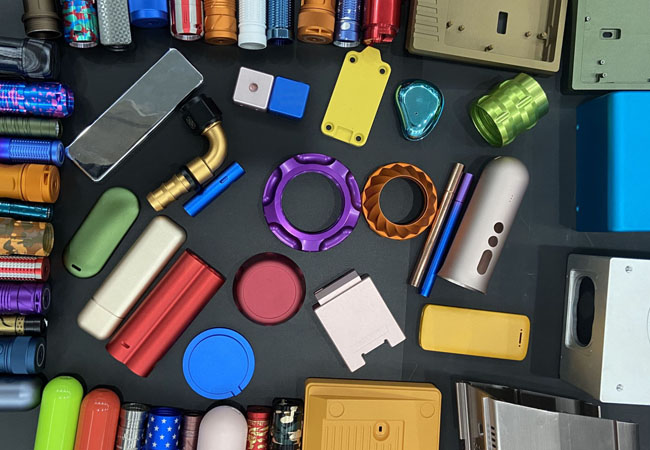
Repeatability and Consistency
Digital control ensures every batch meets the same quality standards. This is crucial for large orders where consistent performance is non-negotiable.
Reduced Waste
Because CNC machining is computer-controlled, it optimizes material usage, reducing errors and unnecessary scrap.
Table:Advantages of CNC Machining
| Category | Advantage | Description | Tip / Note |
| Precision and Accuracy | High Precision | Achieves accuracy up to ±0.01 mm, ideal for aerospace, automotive, and electronic parts. | Always specify necessary tolerances only—overly tight ones increase cost. |
| Tight Tolerances | Maintains dimensional accuracy across all production runs. | Use CNC machining for projects needing uniform parts. | |
| Repeatability | Reproduces identical parts consistently through digital programming. | Ideal for repeat production or long-term spare part supply. | |
| Efficiency and Speed | Faster Production Speed |
Produces complex parts faster than manual methods once programmed. | Use CNC machining for quick prototypes or urgent projects. |
| 24/7 Operation |
Machines can run continuously with minimal supervision. | Choose a CNC machining factory offering 24-hour operations for faster delivery. | |
| Automation |
Reduces manual handling and human error while maintaining quality. | Ask about automation options for cost-efficient mass production. | |
| Cost and Labor |
Reduced Labor Costs |
Requires fewer operators; machines handle multiple tasks automatically. | Useful where skilled labor is limited. |
| Lower Long-Term Costs |
Minimizes scrap, rework, and errors—reducing overall costs over time. | CNC machining is a smart investment for long-term production. | |
| Versatility and Complexity |
Complex Designs |
Handles intricate 3D shapes, fine details, and custom contours. | Provide complete 3D models to ensure accurate toolpath generation. |
| Multiple Materials |
Works with aluminum, stainless steel, copper, brass, and plastics. | Match materials to part function—lightweight or corrosion-resistant. | |
| Flexibility |
Easily switches between designs or small batches without new tooling. | Ideal for prototypes or projects with frequent design updates. | |
| Part Strength and Finish |
Rugged and Durable Parts |
Produces strong, dense parts from solid metal blocks. | Choose this method for parts requiring strength and reliability. |
| Multiple Surface Finishes |
Supports polishing, anodizing, plating, and powder coating. | Plan finishing early—it affects cost and delivery time. | |
| Quality and Sustainability |
Repeatability and Consistency |
Guarantees consistent results across all batches. | Request inspection reports to verify consistency. |
| Reduced Waste |
Optimizes material use and reduces errors through computer control. | Share part layout preferences to minimize material waste. |
Although CNC machining delivers precision and versatility, it also has several drawbacks that can impact production cost, efficiency, and sustainability. Understanding these limitations helps you decide when CNC machining is the right fit—and when other manufacturing methods, like sheet metal fabrication, might be more practical.
High Initial Cost
CNC machines, software, and setup require a significant investment. The cost of purchasing and maintaining advanced machines is higher than that of manual tools or simple fabrication equipment.
Requires Experienced Workers
Although CNC machines are automated, skilled programmers and operators are still needed to set parameters, select tools, and troubleshoot issues. Lack of expertise can lead to costly mistakes.
High Maintenance Costs
CNC machines need regular calibration, lubrication, and part replacement to ensure accuracy. Ignoring maintenance increases downtime and reduces precision.
Program Errors
Programming mistakes can result in tool crashes, scrap parts, or wasted materials. Even a small coding error can ruin an entire batch.
Material Waste
CNC machining is a subtractive process—it cuts material away from a block, which can generate more waste compared to forming or additive manufacturing.
Design Limitations
Despite its flexibility, CNC machining struggles with undercuts, deep cavities, and internal geometries that cutting tools can’t reach.
Size Limitations
The size of your part is limited by the machine’s working envelope. Very large components may not fit into standard CNC machines.
Slow Mass Production (High Cost of Mass Production)
While CNC machining is excellent for prototypes and small batches, it’s slower and more expensive for large-scale production compared to stamping or die casting.
Limited Efficiency for Machining Thin or Large Parts
CNC machining is not ideal for thin-walled or large flat components—it may cause vibration, warping, or excessive waste. Sheet metal fabrication handles these parts more efficiently.
Environmental Issues
CNC machining produces metal chips, cutting fluids, and waste that require proper disposal. Improper handling may harm the environment.
Table: Disadvantages of CNC Machining
| Category | Disadvantage | Description | Tip / Note |
| Cost | High Initial Cost | High setup and equipment costs compared to manual tools or simple fabrication. | Outsource to a CNC machining factory for prototypes. |
| High Maintenance Costs | Requires regular calibration, lubrication, and replacement parts. | Preventive maintenance reduces repair expenses. | |
| Labor and Skills | Requires Experienced Workers | Skilled operators and programmers are essential for setup and troubleshooting. | Ensure your supplier has qualified staff. |
| Programming and Operation | Program Errors | Incorrect coding can cause tool crashes, scrap, and wasted material. | Simulate programs before production. |
| Material and Design | Material Waste | Subtractive process produces more scrap than forming or additive manufacturing. | Optimize toolpaths to save material. |
| Design Limitations | Struggles with undercuts and deep internal cavities. | Simplify part geometry or use multi-axis machining if needed. | |
| Size Limitations | Part size restricted by machine’s working area. | Use sheet metal or welding for oversized parts. | |
| Production Efficiency | Slow Mass Production | Not ideal for large-scale production; higher unit cost. | Use CNC machining for tooling, then switch to mass-production methods. |
| Limited Efficiency for Thin or Large Parts | Thin walls or large surfaces cause vibration or warping. | Use sheet metal fabrication for such components. | |
| Environmental Impact | Environmental Issues | Generates metal chips and cutting fluids needing proper disposal. | Choose suppliers with sustainable waste management. |
CNC machining is widely used across many industries because it delivers high precision, consistency, and strength for both prototypes and production parts. Whether you’re manufacturing aerospace brackets, automotive fittings, or custom electronic housings, CNC machining provides the flexibility and reliability needed for demanding applications.

Aerospace Components
CNC machining is essential in aerospace manufacturing due to its ability to meet strict tolerance and performance requirements. Parts such as turbine blades, brackets, and engine housings are often machined from lightweight materials like aluminum or titanium.
CNC machining produces high-performance automotive components, including engine blocks, transmission housings, and precision gears. The process guarantees dimensional accuracy and long-term durability.
In the medical field, CNC machining ensures accuracy and safety for devices such as surgical tools, implants, and diagnostic equipment. It supports biocompatible materials like stainless steel, titanium, and PEEK plastic.
Electronics and Electrical Housings
For electronic enclosures, heat sinks, and mounting brackets, CNC machining provides superior precision and smooth surface finishes, ensuring proper fit and function for assemblies.
CNC machining supports heavy-duty industrial applications, including gears, shafts, valves, and hydraulic parts. It can handle both small and large components with consistent quality.
Consumer and Custom Products
CNC machining is also used for consumer products like camera mounts, watch cases, and custom prototypes. It allows for low-volume production without the cost of molds or dies.
Table: CNC Machining – Common Industry Applications and Parts
| Industry |
Example Parts |
Typical Materials |
Notes / Tips |
| Aerospace |
Turbine blades, brackets, housings | Aluminum, titanium, stainless steel | Use AS9100-certified CNC machining services. |
| Automotive |
Engine blocks, gears, transmission housings | Aluminum, steel, brass | Ideal for strength and tight tolerances. |
| Medical |
Implants, surgical instruments, housings | Stainless steel, titanium, PEEK | Ensure supplier meets ISO 13485 standards. |
| Electronics |
Heat sinks, housings, panels | Aluminum, copper, brass | Use CNC machining for precise enclosures and mounts. |
| Industrial Equipment |
Shafts, valves, hydraulic parts | Stainless steel, carbon steel, brass | Choose materials based on wear resistance. |
| Consumer Products |
Camera mounts, watch parts, prototypes | Aluminum, plastic, brass | Cost-effective for low-volume custom production. |
Sheet metal fabrication is a manufacturing process that transforms flat sheets of metal into functional components or finished products through cutting, bending, and assembling. It is a subtractive and forming process, widely used to produce durable, lightweight, and cost-effective parts for industries such as automotive, aerospace, electronics, and construction.
Unlike CNC machining, which removes material from a solid block, sheet metal fabrication shapes material without excessive waste, making it ideal for producing large quantities of thin, strong, and geometrically simple parts.
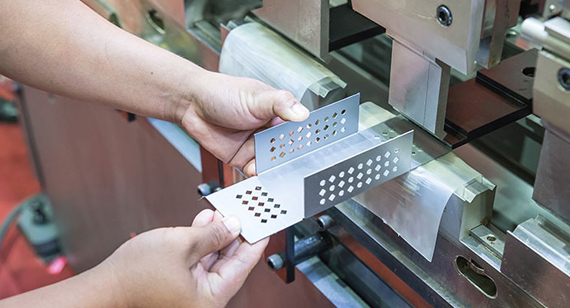
Key Processes Involved in Sheet Metal Fabrication
| Process |
Description |
| Cutting |
Metal sheets are cut into desired shapes using laser cutting, plasma cutting, or shearing. |
| Bending |
The sheet is bent along specific lines using press brakes or bending machines to form angles and curves. |
| Punching |
Holes or slots are created using a punch and die set for fast, repetitive patterns. |
| Stamping |
The sheet is pressed into a mold to produce complex shapes or embossed features. |
| Welding and Assembly |
Cut and formed parts are joined together by welding, riveting, or using fasteners. |
| Finishing |
Surface treatments such as powder coating, painting, anodizing, or galvanizing are applied for protection and aesthetics. |
Common Materials Used in Sheet Metal Fabrication
| Material |
Characteristics |
Typical Applications |
| Aluminum |
Lightweight, corrosion-resistant, and easy to form | Enclosures, panels, and automotive parts |
| Stainless Steel |
Strong, durable, and resistant to rust | Kitchen equipment, architectural components |
| Carbon Steel |
Economical and strong, but prone to corrosion | Structural frames, brackets, and machinery |
| Copper |
Excellent conductivity and malleability | Electrical components and heat exchangers |
| Brass |
Corrosion-resistant and decorative | Instrument panels and fittings |
Sheet metal fabrication offers a balance of cost-efficiency, precision, and versatility for producing functional parts in medium to high volumes. Whether you’re making automotive panels, industrial enclosures, or electronic housings, sheet metal processes allow you to create durable, lightweight components quickly and reliably.
Key Advantages
1. Cost-Effectiveness
Sheet metal fabrication generally costs less than CNC machining for high-volume production, as it reduces material waste and uses simpler tooling.
2. High Precision and Accuracy
Modern sheet metal processes such as laser cutting and CNC punching achieve excellent dimensional accuracy, suitable for applications that require tight tolerances.
3. Durability and Strength
Formed sheet metal components maintain good mechanical strength, especially when bends and folds reinforce the structure.
4. Versatility
Sheet metal fabrication works with various materials, including aluminum, stainless steel, carbon steel, copper, and brass, allowing you to match strength, weight, and corrosion requirements.
5. Scalability
Sheet metal processes are well-suited for both small prototypes and large-volume production runs.
6. Quick Turnaround
Automated cutting, punching, and bending machines allow faster production compared to manual fabrication or CNC machining of solid blocks.
7. Design Flexibility
Sheet metal fabrication can produce a wide range of shapes, from simple flat parts to moderately complex bends and formed geometries.
8. Various Surface Finishes
Parts can be anodized, painted, powder-coated, or polished, enhancing corrosion resistance and appearance.
9. Lightweight Components
Because sheet metal uses thin, formed materials, finished parts are often lightweight without compromising strength.
Table: Advantages of Sheet Metal Fabrication
| Advantage |
Description |
Tip / Note |
| Cost-Effectiveness |
Lower cost for high-volume production with reduced material waste. | Use sheet metal for large batches to maximize savings. |
| High Precision and Accuracy |
Laser cutting and CNC punching deliver tight tolerances. | Provide detailed CAD drawings for consistent results. |
| Durability and Strength |
Folded or bent parts maintain structural rigidity. | Optimize bend locations to enhance strength. |
| Versatility |
Works with aluminum, stainless steel, carbon steel, copper, and brass. | Match material to performance requirements. |
| Scalability |
Suitable for both prototypes and mass production. | Combine CNC cutting with manual forming for small runs. |
| Quick Turnaround |
Automated processes reduce production time. | Provide precise flat patterns to minimize setup. |
| Design Flexibility |
Can produce simple and moderately complex shapes. | Avoid extreme undercuts or deep pockets. |
| Various Surface Finishes |
Supports anodizing, painting, powder coating, and polishing. | Specify finishes early to avoid delays. |
| Lightweight Components |
Thin, formed materials reduce weight without sacrificing strength. | Ideal for aerospace, automotive, and portable products. |
Sheet metal fabrication is versatile and cost-effective for many applications, but it has several limitations. Understanding these drawbacks will help you decide whether it’s the right method for your part’s geometry, strength, and production requirements.
1. Cost and Production
High Upfront Costs
Custom dies, specialized tooling, and advanced machinery can result in significant initial investment, particularly for low-volume production.
Higher Labor Costs
Manual handling, assembly, and secondary processes like welding or riveting increase labor requirements.
Longer Delivery Cycles
For custom designs requiring setup and tooling, lead times may be longer than CNC machining for small or medium-volume production.
Tooling and Setup Costs
Forming machines and dies require setup for each design, which adds to both cost and time for low-volume runs.
2. Design and Material Limitations
Geometric Complexity Limitations
Sheet metal fabrication struggles with deep cavities, undercuts, and complex 3D geometries.
Material Thickness Limitations
Sheet metal is generally thin, limiting parts that require solid or heavy sections.
Springback
After bending, some materials tend to partially return to their original shape, affecting accuracy.
Bending and Forming Limitations
Tight radii or extreme bends can cause cracking, tearing, or deformation.
Joining Limitations
Welding, riveting, or fasteners are required to assemble complex components, which can weaken the structure or increase production time.
Size and Shape Limitations
Large or irregular parts can be difficult to handle, bend, and transport efficiently.
3. Quality and Workmanship
Defect Risk
Improper bending, cutting, or welding may cause warping, cracks, or holes, reducing part quality.
Aesthetic Limitations
Surface scratches, visible seams, or uneven finishes can affect the appearance of the final part.
Vulnerability
Thin sheets may be prone to denting or bending under stress, especially during handling or assembly.
Surface Finish Limitations
While finishes can be applied, the base sheet may not achieve ultra-smooth or highly polished surfaces without additional processing.
Lower Precision Compared to CNC Machining
Sheet metal fabrication cannot match the extreme tolerances achievable with CNC machining, particularly for intricate or highly detailed components.
Table: Disadvantages of Sheet Metal Fabrication
| Category |
Disadvantage |
Description |
Tip / Note |
| Cost & Production |
High Upfront Costs |
Custom dies and machinery increase initial investment. | Standardize tooling to reduce costs. |
| Higher Labor Costs |
Manual handling and assembly increase labor. | Automate repetitive processes where possible. | |
| Longer Delivery Cycles |
Tooling and setup can extend lead times. | Plan schedules carefully for custom designs. | |
| Tooling and Setup Costs |
Each part design may need unique tooling. | Minimize unique tooling to save time and cost. | |
| Design & Material |
Geometric Complexity Limitations |
Struggles with deep cavities or complex 3D shapes. | Simplify design or combine with CNC machining. |
| Material Thickness Limitations |
Thin sheets cannot replace solid or thick components. | Use CNC or casting for heavy parts. | |
| Springback |
Material partially returns to original shape after bending. | Compensate in design and tooling. | |
| Bending & Forming Limitations |
Tight bends can crack or deform material. | Follow recommended bend radii and limits. | |
| Joining Limitations |
Welding, riveting, or fasteners may weaken assemblies. | Minimize joints for stronger designs. | |
| Size & Shape Limitations |
Large or irregular sheets are difficult to process. | Break parts into smaller sections for assembly. | |
| Quality & Workmanship |
Defect Risk |
Improper handling may cause warping or cracks. | Use experienced fabricators. |
| Aesthetic Limitations |
Scratches, seams, or uneven surfaces affect appearance. | Apply powder coating, anodizing, or polishing. | |
| Vulnerability |
Thin sheets may dent or bend under stress. | Reinforce or use thicker materials as needed. | |
| Surface Finish Limitations |
Base sheets may not be ultra-smooth without finishing. | Specify finishing requirements early. | |
| Lower Precision vs CNC |
Cannot achieve extremely tight tolerances like CNC machining. | Use CNC machining for high-precision parts. |
Sheet metal fabrication is widely used across industries because it combines cost-efficiency, durability, and versatility. From lightweight enclosures to structural panels, sheet metal parts are ideal for both functional and aesthetic applications. Understanding where and how sheet metal is applied helps you choose the right process for your project.
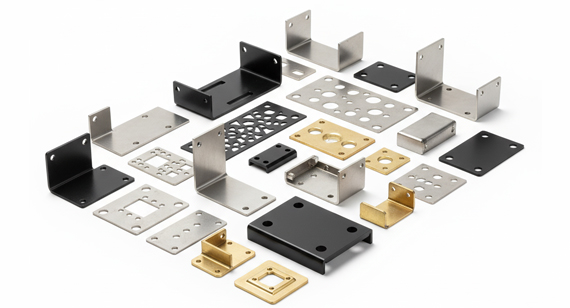
Key Industry Applications
Automotive Parts
Sheet metal fabrication is used to create car body panels, brackets, chassis components, and exhaust systems. Its strength-to-weight ratio and scalability make it ideal for both mass production and custom parts.
Aerospace Components
Aerospace manufacturing relies on sheet metal for lightweight structural components, ducting, and housings. Precision and durability are critical for safety and performance.
Electronic Enclosures and Housings
Sheet metal is commonly used for industrial enclosures, control panels, server racks, and electronic housings. Its rigidity protects sensitive electronics while allowing for heat dissipation.
Industrial Machinery and Equipment
Fabricated metal parts, such as machine guards, brackets, frames, and panels, support heavy-duty industrial applications. Sheet metal offers high durability while remaining relatively lightweight.
Architectural and Structural Applications
Sheet metal is widely used in HVAC ducts, roofing panels, decorative facades, and support structures. Its versatility allows it to be cut, bent, and formed into various shapes.
Consumer Products
Sheet metal is ideal for appliances, furniture, lighting fixtures, and decorative items due to its formability and ability to accept surface finishes.
Table: Sheet Metal Fabrication – Common Industry Applications and Parts
| Industry |
Example Parts |
Typical Materials |
Notes / Tips |
| Automotive |
Car body panels, brackets, exhaust components | Aluminum, stainless steel, carbon steel | Use corrosion-resistant metals for durability. |
| Aerospace |
Ducting, housings, structural panels | Aluminum, titanium | Choose lightweight metals to reduce weight. |
| Electronics |
Industrial enclosures, control panels, server racks | Aluminum, stainless steel, copper | Ensure heat dissipation and rigidity. |
| Industrial Machinery |
Frames, guards, brackets, panels | Carbon steel, stainless steel | Reinforce load-bearing components for durability. |
| Architectural |
Roofing, HVAC ducts, facades | Aluminum, stainless steel | Apply surface finishes for outdoor protection. |
| Consumer Products |
Appliances, furniture, lighting fixtures | Aluminum, brass, stainless steel | Use lightweight metals for portability and ease of handling. |
Choosing between CNC machining and sheet metal fabrication depends on your part’s design, material, production volume, and functional requirements. Each process has advantages and limitations, and understanding them ensures you select the most cost-effective, precise, and durable manufacturing method.
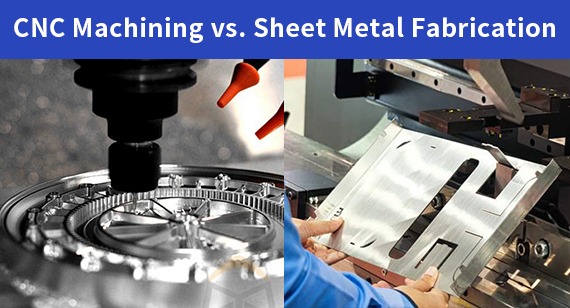
1. Part Design Complexity
Tip: For highly detailed or complex components like aerospace brackets, CNC machining is preferred.
2. Precision
Tip: Use CNC machining for parts requiring exact dimensions or high repeatability.
3. Geometry
Tip: For deep or intricate geometries, CNC machining offers more flexibility.
4. Size
Tip: For oversized panels or enclosures, sheet metal fabrication is usually more practical.
5. Durability and Strength
Tip: Consider material thickness and part function when choosing the method.
6. Integrated Functionality
Tip: For integrated, complex components, CNC machining can reduce assembly steps.
7. Production Speed
Tip: Match production method to quantity and lead-time requirements.
8. Production Scale (Quantity)
Tip: Consider tooling and setup costs when scaling production.
9. Delivery Cycle
Tip: Plan production schedules based on design complexity and batch size.
10. Materials
Tip: Match material choice to functional and environmental requirements.
11. Cost
Tip: Consider total production cost, not just machine cost, when deciding.
12. Applications
Tip: Match the manufacturing process to your industry and functional requirements for best results.
Table: CNC Machining vs. Sheet Metal Fabrication – Key Comparison
| Factor |
CNC Machining |
Sheet Metal Fabrication |
Tip / Note |
| Part Design Complexity |
Complex 3D shapes, deep cavities | Simple bends and folds | Use CNC for intricate parts. |
| Precision |
High, tight tolerances | Moderate, less precise | CNC preferred for critical dimensions. |
| Geometry |
Undercuts, curves, multi-axis features | Limited to folds, bends, moderate forms | CNC offers more flexibility. |
| Size |
Limited by machine envelope | Large sheets handled efficiently | Sheet metal better for oversized panels. |
| Durability & Strength |
Solid, rugged parts | Strong when folded/reinforced | Consider part function and thickness. |
| Integrated Functionality |
Multiple features in one part | Requires joining multiple pieces | CNC reduces assembly steps. |
| Production Speed |
Fast for small batches | Fast for medium/high volume | Match method to production scale. |
| Production Scale |
Low-to-medium volume | Medium-to-high volume | Consider tooling and per-part cost. |
| Delivery Cycle |
Depends on complexity | Often faster for simple parts | Plan lead times carefully. |
| Materials |
Aluminum, stainless steel, brass, copper, titanium | Aluminum, steel, stainless steel, brass, copper | Match material to application. |
| Cost |
High initial, higher material waste | Lower per-part cost for volume | Evaluate total production cost. |
| Applications |
Aerospace, automotive, medical, electronics | Automotive panels, HVAC, enclosures, architectural | Choose based on industry needs. |
CNC Machining vs. Sheet Metal Fabrication: Making the Right Choice?
Choosing between CNC machining and sheet metal fabrication depends on your project requirements, including part complexity, material, production volume, and budget. Both processes have strengths and limitations, so the right choice ensures high-quality parts while controlling costs and lead times.
Key Considerations for Choosing the Right Process
1. Part Complexity and Geometry
Tip: Use CNC machining if your design requires deep cavities or precise integrated features.
2. Precision and Tolerance
Tip: Choose CNC machining for applications where even small deviations can impact functionality.
3. Material and Thickness
Tip: For heavy-duty or thick parts, CNC machining is preferred; for lightweight or large flat panels, sheet metal works better.
4. Production Volume and Cost
Tip: Evaluate tooling, setup costs, and production scale before deciding.
5. Delivery Time
Tip: Align your delivery schedule with the chosen process to avoid delays.
6. Application Requirements
Tip: Match the manufacturing process to your industry and functional requirements for optimal performance.
Summary
Tip: Consult your CNC machining factory or sheet metal fabrication service early in the design stage to optimize manufacturability and cost.
At VMT, we specialize in delivering high-quality CNC machining and sheet metal fabrication services for a wide range of industries. Whether you need aluminum sheet metal, stainless steel machining, copper and brass parts, or complex aerospace components, our experienced team ensures precision, durability, and cost-effective production.
Why Choose VMT?
Comprehensive CNC Machining Services
We provide precision CNC machined parts with tight tolerances, multiple material options, and complex geometries, suitable for automotive parts, industrial enclosures, and electronic housings.
Expert Sheet Metal Fabrication
Our sheet metal process capabilities include cutting, bending, forming, joining, and finishing for large-volume or custom parts. We work with aluminum, stainless steel, and other metals to create durable, lightweight components.
Advanced Equipment and Skilled Team
VMT’s state-of-the-art machines, including multi-axis CNC mills and automated sheet metal systems, combined with a skilled workforce, deliver reliable quality and high repeatability.
Quick Turnaround and Scalability
From prototypes to mass production, we can scale production to meet deadlines while maintaining consistent quality.
Industry Applications
Our services cover aerospace components, automotive parts, industrial enclosures, electronic housings, and consumer products.
How to Start Your Project
Consultation and Design Review
Share your CAD files, drawings, or design ideas. Our engineers evaluate manufacturability, material choice, and cost.
Prototyping and Testing
We can produce prototypes to test fit, form, and function before mass production.
Full Production
Once approved, we deliver high-quality CNC machined or sheet metal fabricated parts at competitive prices.
Delivery and Support
VMT provides timely delivery and post-production support to ensure your parts meet performance and quality standards.
Tip: Provide complete specifications and expected tolerances early to avoid delays and reduce costs.
Conclusion
VMT is your trusted partner for CNC machining and sheet metal fabrication, offering expertise, advanced machinery, and end-to-end support. Whether you need precision CNC machined parts or durable sheet metal components, we help you bring your designs to life efficiently and cost-effectively.
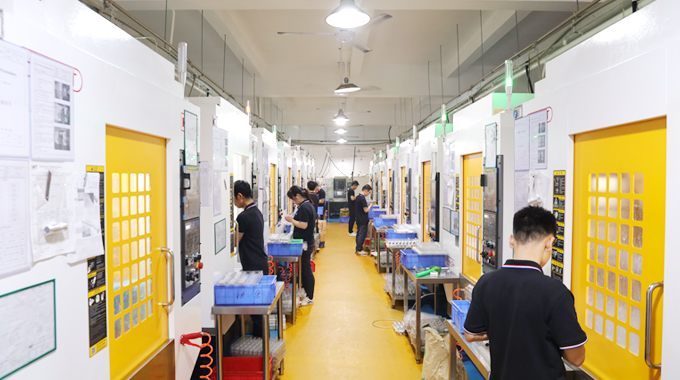
Choosing the right manufacturing process between CNC machining and sheet metal fabrication depends on your part’s complexity, precision, material, production volume, and application. CNC machining excels in high-precision, complex, and durable parts, while sheet metal fabrication is ideal for simpler, larger, and cost-effective components with faster production for medium-to-high volumes.
By understanding the strengths and limitations of each process, you can make informed decisions that optimize quality, efficiency, and cost. Partnering with an experienced CNC machining factory like VMT ensures your project is executed with precision, reliability, and scalability, whether you need aerospace components, automotive parts, industrial enclosures, or electronic housings.
1. Is CNC machining stronger than sheet metal machining?
CNC machined parts are generally stronger because they are cut from solid blocks of metal, providing better structural integrity. Sheet metal parts rely on bending, folding, or joining, which can reduce strength in certain applications.
2. Which materials cannot be machined using CNC machines?
Materials that are extremely brittle (e.g., some ceramics) or very soft and gummy (e.g., certain plastics) may be difficult to CNC machine. Highly reactive metals like magnesium require special safety precautions.
3. Which metal is easiest to CNC machine?
Aluminum is one of the easiest metals to CNC machine due to its low hardness, excellent machinability, and minimal tool wear. Brass and mild steel are also relatively easy to machine.
4. Can CNC machine tools cut sheet metal?
Yes, CNC machine tools such as milling machines or routers can cut sheet metal, but thin sheets are often better processed with sheet metal fabrication methods like laser cutting, punching, or bending for efficiency and reduced material deformation.
5. Is CNC machining stronger than forging?
Forged parts are generally stronger than CNC machined parts due to their aligned grain structure. CNC machining provides precision and complex geometries but may not match forging for maximum strength.
6. What is the difference between CNC and sheet metal?
Tip: Choose CNC for complex, durable parts and sheet metal for simpler, lightweight, or large panels.
7. What is the difference between machined and sheet metal parts?
Tip: Evaluate your part requirements—geometry, tolerance, strength—before selecting a method.
8. Which metal is the cheapest and most suitable for CNC machining?
Mild steel and aluminum are usually the most cost-effective for CNC machining. Aluminum is lightweight, easy to machine, and widely used, while mild steel is strong and affordable for functional components.
